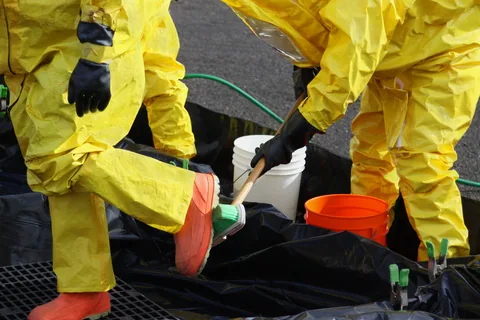
Malignant mesothelioma is a relatively rare form of cancer that appears most commonly in the pleural lining between the lungs and the chest wall. Only in recent decades has the strong connection between most pleural mesotheliomas and workplace exposure to asbestos become well-established and recognized. Although cancer in the pleural lining had occasionally been observed and described by doctors for hundreds of years, it wasn’t until the early 1900s that doctors began to recognize these as “primary” cancers — that is, cancers originating actually in the lungs, rather than spreading as “secondary” tumors from cancers beginning in other locations.
Early studies linking mesothelioma to lung cancers occurred in Germany in the 1940s, in Ireland and Canada in the 1950s (observing respiratory cancer in asbestos miners), and in Australia in the 1960s. Although there were earlier suggestions of linkage between asbestos and mesothelioma, strong scientific evidence of this wasn’t presented until about 1960.
One reason that asbestos wasn’t linked to mesothelioma cancers at an earlier date was the factor of “latency” — the time lag between exposure and symptomatic disease. With asbestos-related mesotheliomas, the latency period is almost never less than 15 years from exposure to diagnosis, and the disease often takes more than 40 years to appear. The average latency period is about 30 years. As a result, the “explosion” in mesothelioma cases didn’t occur until decades after asbestos became a commonly-used product. For example, in the United States, lung mesotheliomas in white males roughly tripled in number from the early 1970s to the early 1980s — a period almost exactly 30 years after the rapid expansion of asbestos use in manufacturing and construction.
Fortunately, mesothelioma remains a relatively rare form of cancer. Unfortunately, the prognosis for its victims is very poor. For patients diagnosed at age 45 or older (and most victims fall into this category due to the long latency period) the survival rate at 3 years post-diagnosis is only about 20%. This is a devastating disease.
Typically, mesotheliomas are diagnosed through a combination of imaging studies (x-ray, CT scan, MRI) that detect the lesions and tissue biopsies that confirm the diagnosis. To date, chemotherapy has been the only treatment option proven to improve survival rates, although surgery and radiation therapy may also be used in different treatment combinations. Immunotherapy using substances such as interleukin-2 and interferon alpha appears to offer some promise, however this research is in relative early stages.
Occasionally, asbestos-related mesothelioma may be due to environmental exposures. Asbestos is a naturally occuring mineral, and in a few places in the world asbestos and related minerals may be present in sufficient quantity to expose residents through the local soils and water. Almost all asbestos-related mesotheliomas, however, are related to occupational environments such as shipbuilding, manufacturing, and construction work, or to secondary exposure to the families of workers who consistently brought home contaminated work clothing. These are not “naturally” occuring cancers — they are a disease for which someone, usually employers, are responsible due to worker exposure to asbestos while in the workplace.
If you or a loved one has contracted mesothelioma that may be asbestos-related, you should seriously consider contacting a qualified attorney as soon as possible. There are firm deadlines for pursuing claims that vary from state to state, and these cases are complicated and challenging to pursue. At the Edward A Smith Law Offices, we understand not only how to get you the legal help you need, we also understand the devastating impact mesothelioma can have upon its victims and their families.
